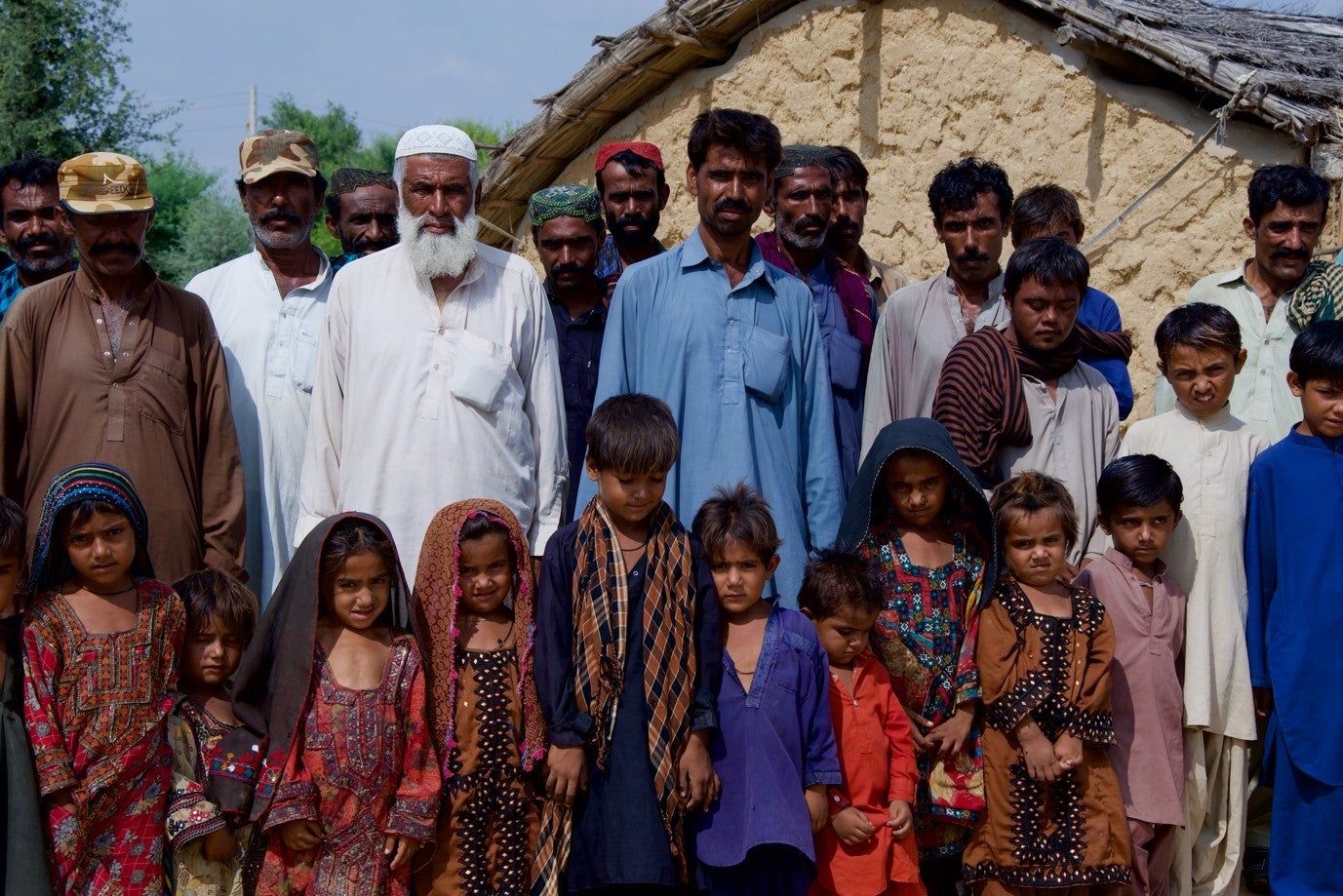 Allah Dino extracting water from his well to water his orchard
Allah Dino extracting water from his well to water his orchard
"Water is our best friend and also our worst enemy," muses Allah Dino as he sits by his well.
"For most of the year, we are in a state of drought. Our fields are dry and our cattle struggle to survive. We wait patiently for the rainy season to bring us water in the nullah (hill torrent). Some years the water is helpful and brings bloom and bounty to the village, other years it is destructive and floods our villages, drowns our cattle and breaks our wells. We pray each year that God sends us the right amount of water."
This, to Allah Dino, a resident of a small village in Jamshoro district of Sindh, Pakistan, is 'climate change.'
The province of Sindh includes some of the most drought-prone areas of Pakistan, having suffered three major droughts from 1999 to 2015. Since 2013, Sindh has witnessed severe and constant drought in the desert areas of Nara, Achhro Thar and Thar, Kohistan and the Kachho region.
A drought hazard risk assessment ranked the population of Jamshoro district as 'very vulnerable' to drought in 2015. Last year, rainfall received in the monsoon season was 69.5 percent below average in Sindh, and Jamshoro is one of the eight districts in Sindh which suffered moderate to severe drought conditions.
The survival of Allah Dino's household and thousands of others like him is dependent on small scale arid farming and livestock rearing. To sustain their livelihoods, the communities anxiously wait for annual monsoon showers to replenish the meager yet precious freshwater sources in the region.

"Some years the water is helpful and brings bloom and bounty to the village, other years it is destructive and floods our villages, drowns our cattle and breaks our wells."
But this bounty is as short-lived as the rains, with the bulk of the rainwater swiftly running off through barren slopes of the region.
As a result, these remote and marginalized communities are exposed to persistent water security challenges throughout the year.
"This year seems different, and I am sure it is because of the dam," says Allah Dino, gesturing to the newly constructed Konkar Dam behind him.
This small recharge dam, with a height of six meters and pondage capacity of 40,000 cubic meters, has been constructed by the Government of Sindh, with financial assistance from the World Bank under the Sindh Resilience Project.
The dam wall was completed just in time for the monsoon rains this year, raising groundwater levels in the adjoining areas by 100 feet. Such robust replenishment of the wells during monsoon season protects freshwater supplies of remote communities and their livestock for the rest of the year.
The Sindh Resilience Project aims to mitigate drought risks in vulnerable areas of Sindh. The small dam investments are a critical intervention for drought mitigation in the province, a calamity that frequently hits the most marginalized communities in the province resulting in extreme socio-economic hardships.
These significant social impacts affect children especially. During the extended drought in Sindh of 2014-17, more than 1,000 children died and 22,000 were hospitalized with drought-related diseases in the Tharparkar District.

About 20 small groundwater recharge dams, similar to the one in Konkar, are being constructed under the project to improve water security across some of the most barren and desolate regions of the province , which suffer from chronic droughts and extreme poverty.
These regions are at quite a distance from the Indus river, which is the lifeline of irrigated agriculture in the province. The dams are expected to improve water security through groundwater recharge for an estimated area of 10,000 hectares, which supports almost 100,000 people who exclusively rely on freshwater aquifers for sustenance.
The introduction of solar-powered tube wells and water-intensive crops such as cotton can bring short term prosperity to the local communities, but leave them in a worsened state in the longer term.
Aware of this risk, the Sindh Resilience Project is going beyond the construction of dams to put in place procedures to monitor and maximize the use of recharged groundwater.
These small dams are already creating a big impact for the marginalized and vulnerable communities by sustaining the freshwater bounty of monsoon season in the arid yet fertile wilderness of Sindh.
Currently, a study is underway to map the current crop patterns, irrigation and water practices of communities living around the dams constructed by the project.
On the basis of this study, the project will be working with the communities to introduce sustainable water usage and agricultural practices to make a Small Dam into a Smart Dam.
Encouraged by the swift and positive impacts of the small dam investments for local communities, the Government of Sindh is now looking to scale up and expand such infrastructure to other parts of the province.
Allah Dino is excited as he gives a tour of his fruit orchards.
"Look at the health of the trees and the fruit that is coming. It seems I am going to have a bumper crop and profit after years," he says. "It's because there has been enough water in my well to water my orchards with the right amount of water at the right time."



Join the Conversation